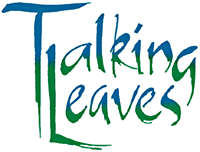

Are we looking in the right places?
Perhaps our received ideas of "community" are unnecessarily limited. A community that includes only people may not, in fact, be a community at all. In section one of this issue, Community with All Beings, our authors explore what expanding our concepts of community could mean. Joanne Lauck asserts that insects are just as vital parts of our extended "ecological self" as any other creature, and that re-connecting with them can help us heal our relationship with the earth. While perched in an old-growth Douglas Fir, Khaos discovers a similar bond with a Northern Flying Squirrel. Fellow tree-sitter Monkey advocates the kind of natural anarchism practiced by this Fall Creek tree village. Jesse Wolf Hardin reminds us that the natural world is inherently part of our community whether we recognize this or not, forming the context for every collective human endeavor, and that balanced, vital societies take their cues from their natural surroundings.
In section two, Community Between the Rows, three gardeners detail their personal journeys toward community--with people and with the earth itself. Cathrine Sneed describes the horticultural training program she started for convicts in the San Francisco County Jail, and its remarkable success in restoring people as well as land. Carrie Little tells the story of a Community Supported Agriculture project that has converted vacant lots into gardens, replaced hunger with nutrition, and employed and served the homeless in a Spokane neighborhood. Chris Roth traces his quest to learn about both beans and community, in educational settings, on farms, in intentional communities, and on his own--discovering, in the end, that it's difficult to grow one without the other.
Section three, Rediscovering Human Community, shares the insights of a prominent futurist on how we can bond more effectively in our human groupings. In an excerpt from his book and lecture series Reworking Success, Robert Theobald asserts that local community activities are vitally important "building blocks toward the truly fundamental change we need"--and gives inspiring examples of communities working together on a small scale to create this change.
Community with Intention, section four, takes us further in this same direction, into the world of intentional communities. Geoph Kozeny, the famed "peripatetic communitarian," offers an introduction and overview based on his quarter-century in the communal trenches, and offers some hard-won lessons. Albert Bates, Marilyn Friedlander, Rupert Fike, and Rachel Sythe share perspectives and stories of The Farm in Summertown, TN, including a memorable encounter between CBS news reporter Dan Rather and "the Wolfman." Finally, two Talking Leaves editors flip coins to determine which side of the Lost Valley Educational Center story each one will tell, and Larry Kaplowitz ends up with the privilege of shedding light on the "Dark Side" we usually don't mention.
Section five, Y2K: Getting Prepared, features ideas and practical techniques for preparing for possible disruptions caused by the Millennium Computer bug/bomb. Debbie Hubsmith sees Y2K as an opportunity to promote bioregionalism as a strategy for sustainability, crisis or not. Tom Atlee describes steps we can take in the areas of energy, food, waste, water, toxics, and economics to bring us together as communities, "rediscovering neighbors and nature" through Y2K. The section concludes with instructions on making and using hayboxes, solar box cookers, and rocket stoves--sustainable cooking technologies guaranteed to be unaffected by date changes.
We round out the issue with book reviews, music reviews, and announcements, many of them dealing with these same subjects. This issue is also enriched by poetry, artwork, and letters sent by readers.
Thanks again for joining us in this issue of Talking Leaves.
�1999 Talking Leaves
Spring/Summer 1999
Volume 9, Number 1
Cultivating Community
We welcome your letters!
For a sample copy of the Spring/Summer 1999 issue, "Cultivating Community," send $6 to
